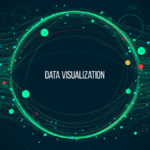Finding Meaning in Utilities Data: Visualization and Storytelling
Finding Meaning in Utilities Data: Visualization and Storytelling
The Utility Industry continues to adapt to new regulations, changes in public perception and emerging market opportunities. Examples of drivers causing change include modernizing and expanding infrastructure, implementing decarbonization solutions, pursuing sustainability polices, reducing the cyber-security threat and embracing the shift towards green energy. Analytics solutions are key enablers for managing changing and pursuing new opportunities.
Analytics effectiveness and impact depends on visualization skills of two kinds – ability to create visuals and ability to understand visuals. The real value of visualization does not come from creating visuals, but from understanding what they tell you. With the language of words, we learn reading and writing as separate but related skills. Similarly, with visual language we need to learn understanding (reading) and creating (writing) as distinct but related skills.
Data analysts at the top of their game go beyond creating data visualizations. They add narratives to interpret the visuals and to explain insights and recommendations. In short, they tell data stories. Stories are powerful things. We’ve used them throughout history to capture attention, convey ideas, fire the imagination, and stir the soul. Data can be persuasive, but stories are much more. A well-told story is inspirational. The utility industry is rich with opportunities to deliver well crafted stories to all of its stakeholders. As society moves to new energy sources and delivery models, it is essential that data driven stories are presented to educate and guide us through the transition.
On the surface, storytelling appears to be the opposite of analytics: anecdotal instead of quantitative. But quantities aren’t the only way, or even necessarily the ideal way to convey information. We know that not everyone is a quant who thinks natively in numbers. Some think in pictures, thus the popularity of data visualization. Still others — a vast portion of business people — would rather not think about data at all, preferring to hear its meaning in anecdotes, metaphors, and examples.
Storytellers are the new generation of business and data analysts. They don’t dismiss the value of the quants – quantification is the foundation. They don’t devalue the importance of visualization; in fact, they amplify it by scripting a story through visuals to communicate the what, when, where, who, and why of business circumstances and business behaviors.
Finding Meaning in Utilities Data:
Visualization and Storytelling
Course Outline
Course Calendar
What You'll Learn
- Ten key concepts of data visualization
- The most important things to look for when reading visualizations
- How to do a “quick read” and a “critical read” of data visualizations
- To see trends, patterns, and outliers in visual presentation of data
- To see ambiguity, distortion, and bias in visual presentation of data
- Four reasons to pursue the art of storytelling
- How to find the stories in data
- How to compose captivating and compelling stories
- Models, frameworks, and patterns for data stories
- How to choose the best media for storytelling
Who Should Attend?
- Business managers, decision makers, analysts and other analytics consumers seeking to refine their skills for understanding data visualizations and delivering data stories to share information
- Energy policy makers, regulatory staff and marketing professionals who need data driven stories to effectively communicate messages to their stakeholders
- Developers of data visualizations who will improve visualization skills by seeing data visualization through the eyes of the readers
- BI and analytics professionals who create dashboards and scorecards for the business
- Data analysts and data scientists who create data visualizations to inform others
- Everyone who needs to explain data visualizations to others, ranging from business managers presenting performance data to data scientists presenting predictions and recommendations
- Everyone who uses data as a tool to inform, influence, and persuade others
Pricing
Virtual Training
In-Person Training
Virtual Training
UAI Member
-
Regular Pricing: $395
Non-Member
-
Regular Pricing: $595
In-Person Training
UAI Member
-
Regular Pricing: $795
Non-Member
-
Regular Pricing: $1095
Not a UAI member and interested in learning more? Contact our Membership Team!
UAI Utility Membership is at the organizational level and is designed to aid utilities looking to realize desired business outcomes using analytics. Membership benefits are centered around an experience that allows utility members to share insights, knowledge and practical application techniques.
UAI Utility Membership allows everyone with a stake in analytics to take the lead, get involved and start their journey to become a smarter utility analytics professional.

James Wingate
Membership Development Manager
jwingate@endeavorb2b.com
404-226-3756
Meet The Instructors

Mark Peco
Independent Consultant and Educator

Jed Summerton
Analytic Leader & Practitioner

